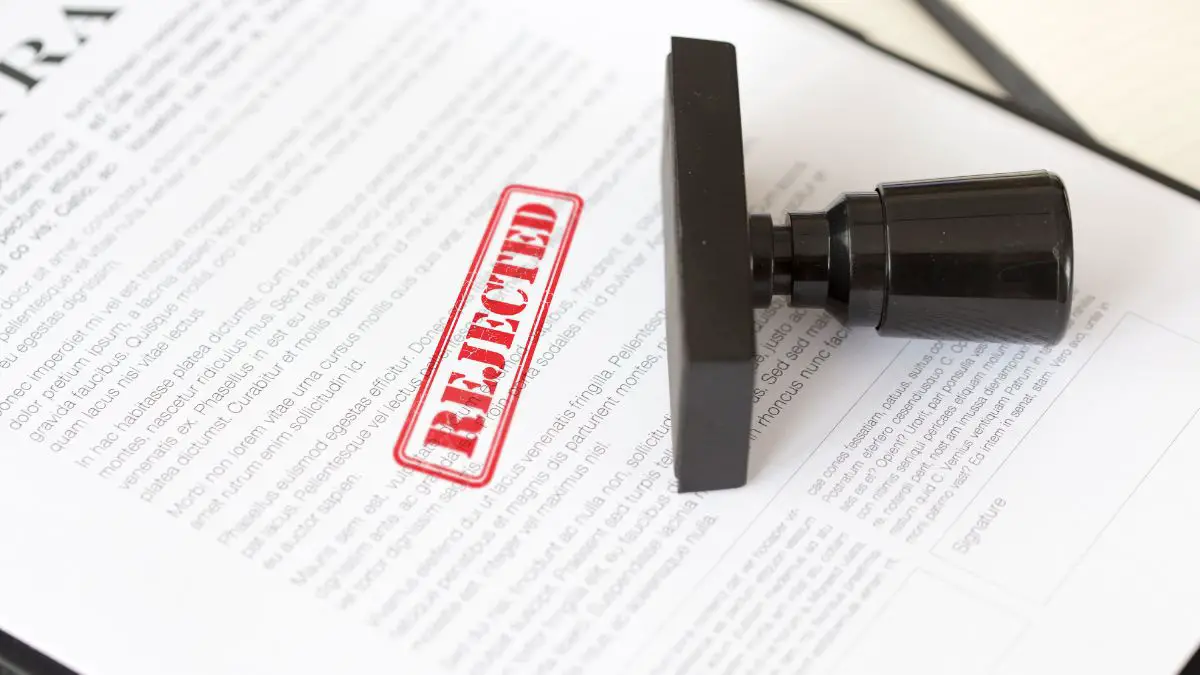Table of Contents
- 1. Your Journal Manuscript is Not Within the Scope of the Journal’s Publication
- 2. Language Issue
- 3. Your Research Lacks Novelty
- 4. Your Journal Manuscript Did Not Comply with the Submission Guidelines
- 5. Your Work (or Part of It) Was Published Elsewhere
- Concluding remark
In this write-up, we discuss five common reasons for journal manuscript rejection. For over a decade, my daily routine in the journal division (I administered several academic journals covering science and humanities) included sending that dreaded rejection email to authors, telling them their manuscripts were declined and the reason for rejection.
Yes, for over a decade, part of my job dealt with many disappointed and sometimes angry people.
Imagine. You have spent hours crafting your journal manuscript and are sure it is a perfect fit for the journal.

You submit the manuscript to a journal editor who reviews it thoroughly. And then they reject it from publication. After weeks or months of waiting in anticipation, all you get is a crushing defeat.
Sometimes, a manuscript is declined publication without even going through the peer review.
What are the reasons why your journal manuscript is rejected for publication?
Here, we discuss five common reasons.
1. Your Journal Manuscript is Not Within the Scope of the Journal’s Publication
Submitting a paper within scope is an important prerequisite.
When journal editors conduct journal manuscript evaluations, they look for manuscripts that fit within the scope of their journal’s publication. It is part of the editorial’s responsibility to only publish papers within the aim and scope.
A journal’s aim and scope can be found quickly.
Most of the time, it’s right there on the journal website‘s homepage. So, when you arrive at the journal’s website, spend a couple of minutes learning more about the journal.
Read the About section, where (databases) the journal is indexed, and the types of papers the journal publishes (original research, review papers, book reviews, case studies, etc.), and do not forget the publication scope.
If your submitted manuscript is not within your scope, the rejection will come very early without undergoing the peer-review process.
Sure, the journal editors would not want to waste their time reviewing a paper that will never get published!
2. Language Issue
Sometimes, authors are in a rush to publish their journal papers due to certain reasons.
These reasons could be authors chasing deadlines, a PhD candidate needing to produce evidence of publications, getting the next research grant, meeting research key performance indicators (KPIs), and so on.
In a rush, they tend to get clumsy by submitting a manuscript with poor English command and numerous errors throughout the paper. Even their abstract is full of language errors!
Sad but true.
Journal editors will not be happy when the language of a manuscript is poor. Indeed, they do not wish to publish sub-par journal manuscripts, which will affect the journal’s standing and rating.
Likewise, reviewers would find it a turn-off when attending to a poorly written manuscript. They will not be motivated to read journal manuscripts full of English errors.
After all, it is their time and effort spent reviewing your manuscript.
So, ensure you thoroughly and adequately edit your journal manuscript before submission. Spend extra hours proofreading for language issues like spelling mistakes, typos, or grammatical issues needing rectification.
Also, I would recommend your paper be edited by a professional editor who preferably has expertise in academic editing. This is especially important if English is not your native language.
[Click to read my article on how to improve your English writing for non-native English speakers.]
Note that editing your manuscript and proofreading professionally does not guarantee acceptance yet, but this is half the job done.
Always remember that if you want to publish in international journals with strong impact factor ratings, take time and invest in getting a good command of English before submitting any journal papers.
3. Your Research Lacks Novelty
Research must have novelty before it can be published in a scholarly journal.
What does it mean by novelty?
Novelty means that similar research has not been done and published elsewhere. New or novel research will not be found in the research literature (databases and archives).
Editors and reviewers play a vital part in identifying the novelty or the gap in your research.
Manuscript reviewers are usually experts with extensive experience in your research area. It won’t take them long to determine if your research has been contributed to the academic literature.
New journal manuscripts should present new ideas, concepts, and results not already covered in other journal papers previously published by the journal or any other journals indexed in the same databases as your journal manuscript will be submitted.
In journal publishing, novelty is a crucial aspect regarding acceptance of journal publication.
So, ensure you have done an extensive literature survey and research before writing your manuscript.
Try researching in journal databases such as Google Scholar, Scopus, Web of Science, PubMed, and so on (some databases can be accessed for free, while others require a subscription) using keywords related to your research and see what comes up.
Look at the methodologies or approaches, experiments, and findings. If you find similarities, it’s time to step back and tweak things.
Good researchers also read extensively. They read books, articles, and journals related to their expertise.
This habit of extensive reading will help them identify research related to their field. Hence, a good researcher can know if a particular research is novel based on his reading without writing his next journal manuscript.
4. Your Journal Manuscript Did Not Comply with the Submission Guidelines
I noticed repeatedly that many authors did not even bother to read journal submission guidelines. Why is this so?
As a result, they submit a highly non-compliant manuscript that does not adhere to the journals’ styles, formats, and requirements.
Each scholarly journal has its requirements and style of writing, which authors need to follow.
Some of these requirements include the following: reference/citation format (e.g., Harvard, Chicago Manual of Style, APA), illustration guides (format of visuals), the length of paper (minimum and maximum), section styles, in-text citation, and so on.
If you don’t follow these requirements, you will make the journal administrator’s life difficult. Poorly non-compliant submission (even if your paper is within the right scope) will result in a rejection.

5. Your Work (or Part of It) Was Published Elsewhere
Academic journals have a mechanism to detect plagiarism by using different tools.
Here, we are talking about self-plagiarism, in which an author publishes the same content (partially or in its entirety) in different journals.
Self-plagiarism is a severe offense when publishing a journal manuscript. You may get yourself banned from that journal.
A journal may also make an official complaint about your offense. Certain institutions do not take this lightly, and you may end up with disciplinary actions.
So, tread carefully.
The rule is simple. If a certain part of your journal paper has already been published elsewhere, you cannot publish it again anywhere else.
Also, remember that you cannot submit the same manuscript to two (or more) different journals simultaneously. This is also something that researchers are not aware of.
You must wait for the process to complete and see the result first. If your manuscript ends up with an acceptance, then that’s good. If your paper is rejected, you can now seek submission to another journal.
Concluding remark
We hope you will learn from some of these common reasons for journal manuscript rejection. It can be hurtful when your journal manuscript gets rejected for publication.
In the academic fraternity, we have the “publish or perish” notion. Sometimes, one paper rejection means an academic cannot get promoted or meet the annual KPI target.
Authors react differently when their journal manuscripts (or any publishing documentation) get rejected.
Some would express thanks and move on to find a different publisher, while others get mad. Sometimes, I have to bear the brunt of their anger.
The best way to handle a manuscript rejection is to plan the subsequent strategy of improving the manuscript and sending it to another journal that might consider publishing it.
Rejection does not mean that the manuscript is trash. The likelihood of the manuscript being published in another journal will be higher if you follow the right process and meet the proper criteria.
As time passes, I will continue updating the article and add more reasons why your journal manuscript is rejected so that the write-up can remain relevant and up to date.
If you have an opinion, please add your thoughts in the comment section below. I will be happy to hear from you.

1 thought on “5 Common Reasons for Journal Manuscript Rejection”